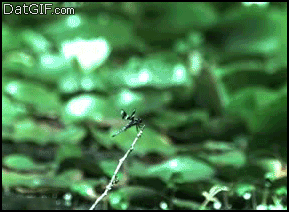
|
This trap eliminated 14 times more stink bugs than store-bought traps that cost up to $50‘Tis the season for stink bugs, and before you know it, you might start seeing them everywhere. But if you think you need some kind of expensive, complicated way to get rid of them, think again. A group of researchers from Virginia Tech University conducted a study that found that instead of a fancy contraption, all you need is a pan of water and a light to attract the bugs to their doom. The necessary supplies:
The Virginia Tech team has proven that homemade, inexpensive stink bug traps crafted from simple household items outshine pricier models designed to kill the invasive, annoying bugs. Researchers from the university’s College of Agriculture and Life Sciences found the best way to get rid of the little buggers: Just fill a foil roasting pan with water and dish soap, and put a light over the pan to attract the bugs in a dark room. The trap eliminated 14 times more stink bugs than store-bought traps that cost up to $50, the study found. The homemade model is comparatively cheap — roasting pan, dish soap, light — and homeowners might already own the components. By the way, a stink bug’s ability to emit an odor through holes in its abdomen is a defense mechanism, meant to prevent it from being eaten by birds and lizards. Simply handling the bug, injuring it, or attempting to move it can trigger an odor release. |
You’ve been munching on insect legs and heads for a long, long time.Are you brave enough to try roasted grasshoppers? It probably wouldn’t be your first meal that contains insects. Odds are, you’ve been eating bugs this whole time—and you just never knew it. Yep, you read that correctly. According to a new study by Terro, an ant and insect control company, bugs could be in your breakfast… or lunch… or dinner. After analyzing data from the FDA and FAO, Terro found that insect fragments are found in many of the foods that you’d buy at the grocery store (and it’s even legal!) The highlights? By Food and Drug Administration (FDA) standards, frozen broccoli can have 60 insects per 100 grams (about 1/2 cup), Terro reports. Technically, the average coffee drinker could consume almost 140,000 insect fragments per year. And beetles are the most popular insects eaten globally; they make up 31 percent of bug consumption. Sounds scary. But wait! Before you toss everything in your pantry, you’ll want to read the fine print. While the idea of an insect head squished inside your chocolate bar might be pretty gross, it’s totally harmless. The Food and Drug Administration (FDA) “allows for a small amount of insect material that is guaranteed safe for human consumption to pass into our food,” Terro writes. “Otherwise, resource costs would be too unmanageable to eliminate all defects from food production.” Not to mention it’s nearly impossible to remove every single bug from food grown on farms. Thankfully, there’s a lot of nutritional value in insects, too. Mealworms provide more protein than chicken or salmon, and crickets have almost as much iron as red beef, according to Terro’s research. So chow down—if you can stomach it! Read Terro’s charts above for even more fascinating facts about your insect consumption. And by the way, not to gross you out, but there might be fecal matter in your coffee. |
One in five Americans either has had bed bugs, or knows someone who has. And the problem isn’t going away. It’s actually getting a lot worse.
They’re tiny, resilient, and they want to suck your blood. Bed bugs are a serious issue that isn’t going away any time soon. Here’s what you need to know about the microscopic monsters.
As this video from the SciShow YouTube channel explains, bed bugs are one of the fastest growing pest problems in the developed world—and it’s getting worse. If you’re unfamiliar with bed bugs, or Cimex lectularius, they’re tiny, blood-feeding insects that have acquired a taste for us humans over thousands of years. In the video, you’ll learn that bed bugs can live just about anywhere in your home, stuffing bedding and mattresses in plastic bags to starve out bed bugs doesn’t work, and the most efficient way to kill a bunch of bed bugs is heat. Adults and eggs will die within 10 minutes if exposed to temperatures of 115 degrees Fahrenheit (but don’t go lighting your bed on fire.) Fortunately, bed bugs don’t seem to pass on disease like most other blood-feeding insects, so you can take some solace in that.
There are some things you can do to fight off bed bugs, like freezing blankets and linens for several weeks, or calling an exterminator. But the best thing you can do is try to prevent them. Seal up cracks and crevices around your home so they don’t have anywhere to hide, check hotel rooms for them so you don’t any home, and set out traps.